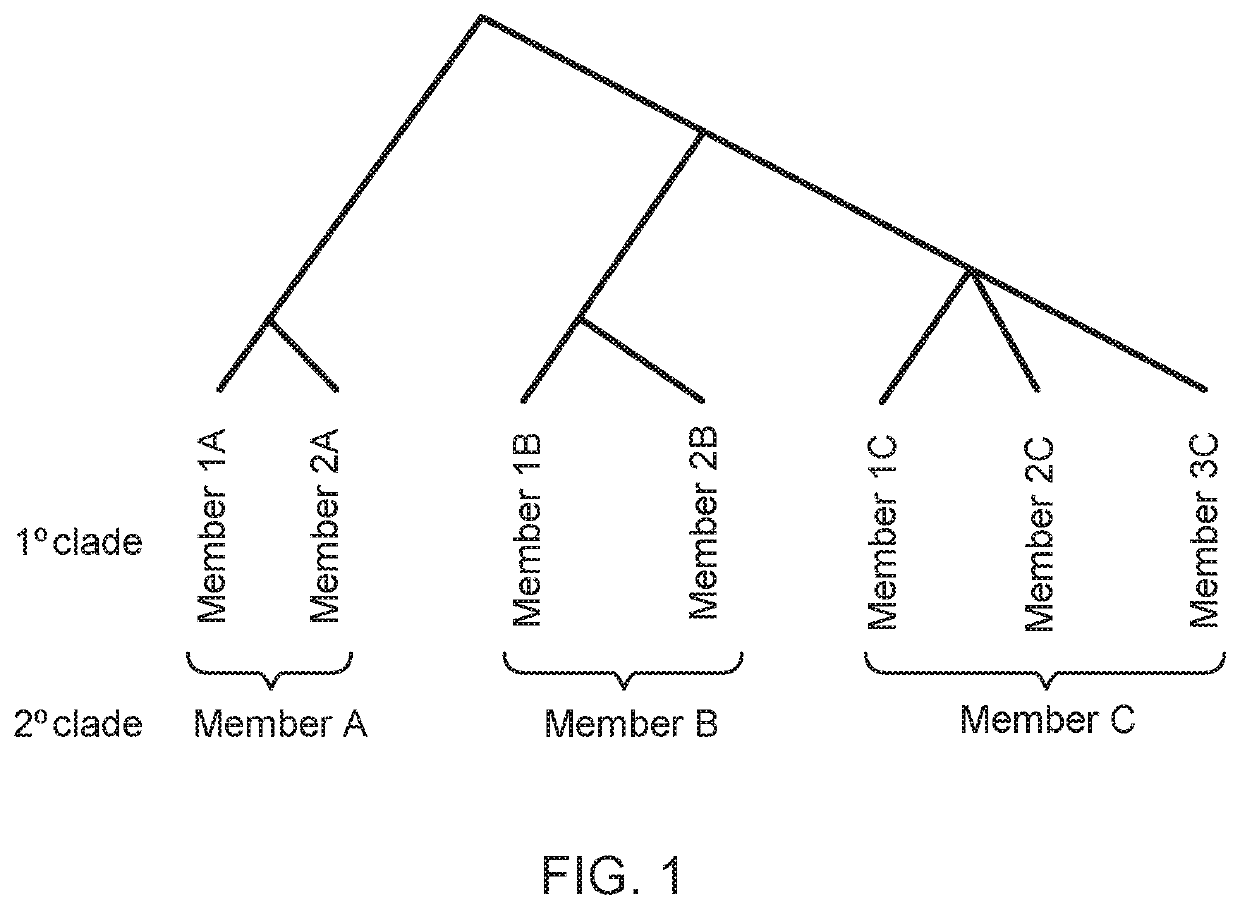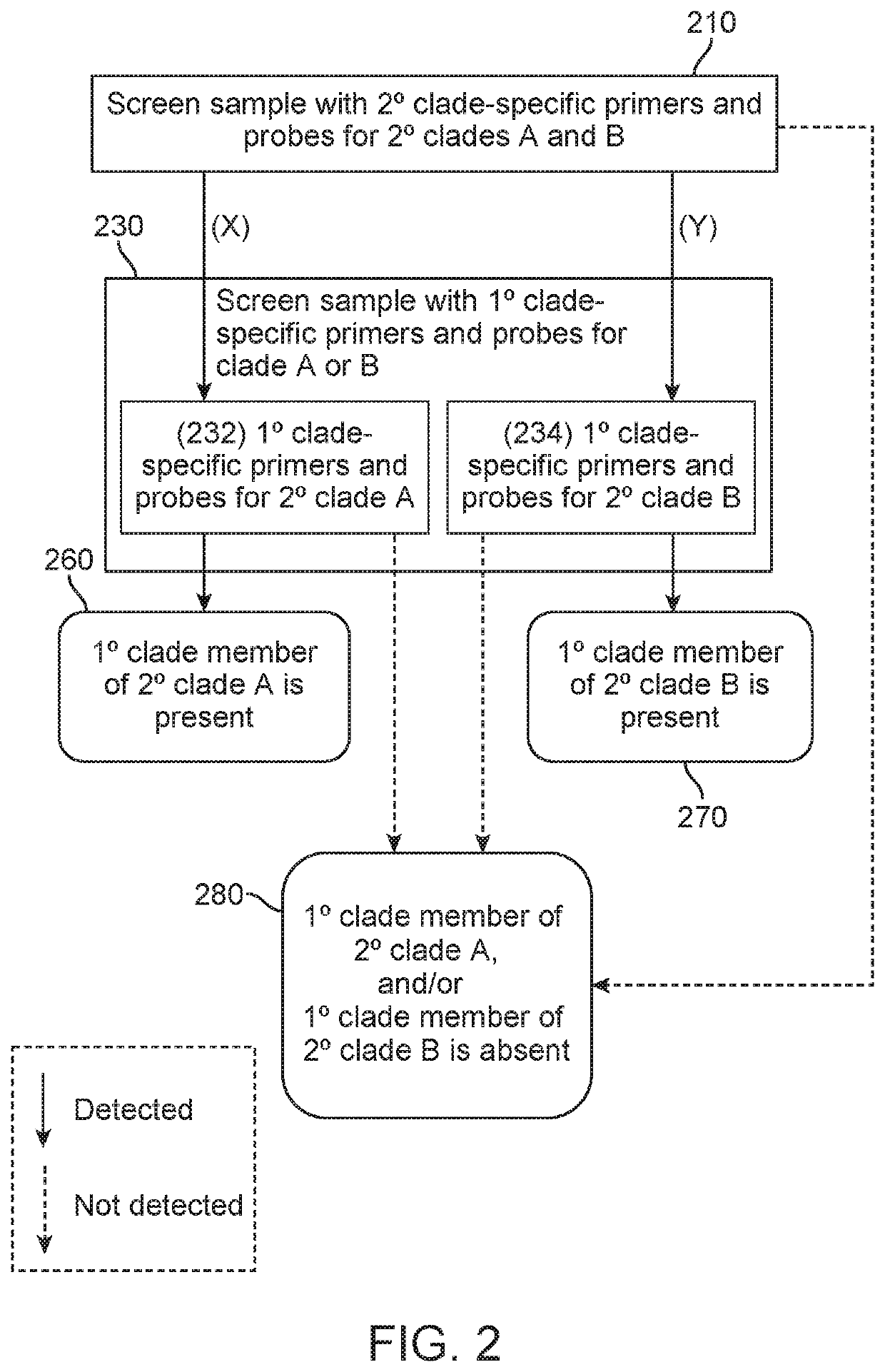Methods of screening for causative agents of onychodystrophy
a technology of onychodystrophy and screening method, applied in the field of screening for onychodystrophy causative agents, can solve the problems of loss of digits or limbs, increased risk of cellulitis,
- Summary
- Abstract
- Description
- Claims
- Application Information
AI Technical Summary
Benefits of technology
Problems solved by technology
Method used
Image
Examples
example 1
II. EXAMPLE 1
Verification and Validation Overview
[0450]A. OIAD Screen and Reflex Assays Verification Study Summary[0451]1. OIAD Screen Assay Specificity Studies Summary[0452]All assays were tested for reactivity against 1 ng genomic DNA from 54 specificity / inclusivity organisms including 13 yeast, 9 dermatophytes, 5 bacteria, 25 saprophytes and 2 controls. Human genomic DNA and plasmid based ECIC controls were tested at 4 ng and 0.0001 ng.[0453]a) OIAD Screen Assay—Dermatophytes:[0454]i. All intended dermatophyte targets were amplified by the assay.[0455]ii. The dermatophye screen assay correctly did not amplify on 13 yeast, 24 saprophytes and 5 bacteria[0456]iii. The dermatophye screen assay showed no cross reactivity to any organism tested.[0457]b) OIAD Screen Assay—Saprophyte:[0458]i. All intended saprophyte targets were amplified by the assay.[0459]ii. The saprophyte screen assay correctly did not amplify on 13 yeast, 9 dermatophytes and 5 bacteria[0460]iii. The saprophyte scree...
example 2
III. EXAMPLE 2
Verification Study Results
[0552]A. OIAD Screen Assay[0553]1. Specificity and Inclusivity Studies[0554]a. Design[0555]i. All assays were tested for specificity / inclusivity against 54 separate organisms including 13 yeast, 9 dermatophytes, 5 bacteria, 25 saprophytes and 2 controls (Table 8).[0556]i. The identities of DNA isolated from in-house cultures were previously confirmed by DNA sequencing. Organisms not isolated from in house culture included Aspergiluus flavus (ATCC #204304D-2), Trichophyton mentagrophytes (ATCC #9533D-2), Malassezia restricta (ATCC #MYA-4611D-5), Candida albicans (ATCC #MYA-2876D-5), Candida tropicalis (ATCC #66029D-5), Candida parapsilosis (ATCC #22019D-5), Candida guilliermondii (ATCC #6260D-5), Candida lusitaniae (ATCC #42720D-5), Cryptococcus neoformans (ATCC #208821D-2), human genomic DNA (Promega, cat #G3041), and ECIC (synthetic plasmid DNA from Genscript).[0557]ii. Each organism was tested at 1 ng / reaction except for human genomic DNA (H...
example 3
IV. EXAMPLE 3
Validation Results
[0615]A. OIAD Screen Assay Concordance with Reference Method[0616]a. Design[0617]i. The clinical performance of the OIAD Screen Assay fungal targets was assessed using histopathology as the reference method on 802 clinical samples. In addition, 364 contrived and sequence verified samples were also used in the analysis for a total of 1166 samples.[0618]ii. The clinical performance of the OIAD Screen Assay-Pseudomonas aeruginosa was assessed using microbiological culture as the reference method. Due to the lack of availability of sufficient sample remaining for culture from the original 802 clinical samples, an additional 113 samples were analyzed via the OIAD Screen assay compared to microbiological culture.[0619]iii. Sanger sequencing was used to resolve discordant results on clinical samples. For all contrived samples the reference method was Sanger sequencing for each sample. Results are reported as overall, and broken out for each class of organism ...
PUM
| Property | Measurement | Unit |
|---|---|---|
| Fraction | aaaaa | aaaaa |
| Electrical conductance | aaaaa | aaaaa |
| Electrical conductance | aaaaa | aaaaa |
Abstract
Description
Claims
Application Information
 Login to View More
Login to View More - R&D
- Intellectual Property
- Life Sciences
- Materials
- Tech Scout
- Unparalleled Data Quality
- Higher Quality Content
- 60% Fewer Hallucinations
Browse by: Latest US Patents, China's latest patents, Technical Efficacy Thesaurus, Application Domain, Technology Topic, Popular Technical Reports.
© 2025 PatSnap. All rights reserved.Legal|Privacy policy|Modern Slavery Act Transparency Statement|Sitemap|About US| Contact US: help@patsnap.com



